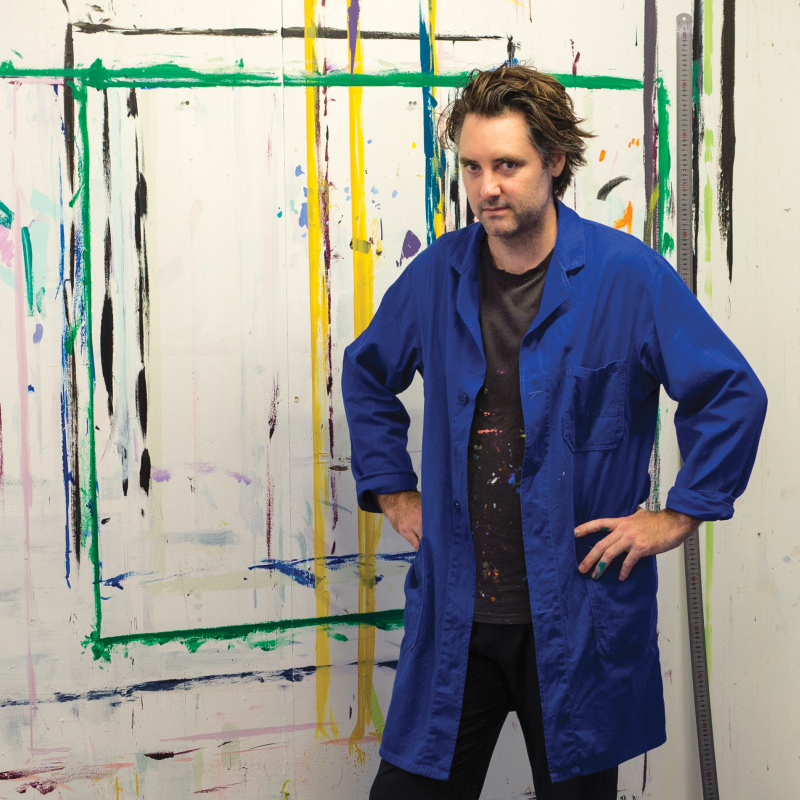For centuries, paint has been used to beguile the eye into perceiving new and fantastic worlds, using two dimensional techniques to create three dimensional perspectives. Chief among the artists’ tools has been the manipulation of colour and line to create fabricated horizons, encouraging the viewer to embrace an alternative reality. By reducing the world to its simplest forms through abstraction, Brisbane-based artist Andy Harwood confronts his audience with the fallibility of human perception.
Harwood’s works are brilliantly disorientating. Repeating lines and shapes rendered in neon hues create disciplined compositions that seem to move and shake before your eyes. Though we know we are perceiving a flat, immobile canvas, Harwood’s works seem to open voids into unknown spaces that at once entice us in and push us out. Planes of bright colour vibrate against one another, forging new visual relationships. Harwood employs numerous underlayers and textural finishes rather than entirely removing the hand of the artist, which serves the dual purpose of adding dynamism to his pieces as well as ensuring we remain entirely aware of the artifice of the work. In a world where digital art and NFTs are increasingly becoming the norm, Harwood proves that paint can still convey a life of its own.
These works are contemporary descendants of the 20th century Op art movement, and Harwood draws heavily from the colour theories of Josef Albers. In his seminal written work Interaction of Color, Albers states that “in visual perception a color is almost never seen as it truly is… color [sic] deceives continually”. Albers proposed that colour must be experienced, as different colour combinations produce subjective responses and behaviours that cannot be objectively defined. Within Harwood’s practice, bands of colour are placed next to each other in gradients that generate new visual relationships, each portion acting in concert to evoke an emotional reaction within the viewer. A vivid pink, once removed from a worldly context, generates different aesthetic effects when juxtaposed with a deep blue rather than simply perceived on its own. We are thus given time and space to contemplate these visual affinities and are encouraged to interrogate our own responses.
This subjective experience of colour relates to Harwood’s other core influence: his self-diagnosed obsession with music. In much the same way that music transforms something scientifically quantifiable like soundwaves into an experience that produces emotion, his work utilises the visual building-blocks of art to create something that is greater than the sum of its parts. While our bodies usually perceive external reality relatively accurately, our brains often alter or even misinterpret this data to suit internal biases and expectations. Vibrations in the air become discrete sounds, our interpretation of which are informed by previous experience.
Similarly, Harwood’s rigid, geometric structures are granted dynamic motion by our synapses when confronted with bright colours and symmetrical lines. We each experience these works differently, and in doing so we must confront the very nature of our consciousness and its ability to interact with the external world.
Having been featured in the Museum of Brisbane’s 2020 exhibition Bauhaus Now, Harwood is moving from strength to strength. He is currently represented by Studio Gallery Group, which will present a solo exhibition of works from his Future Rumination series in March at its Sydney space. His balanced and symmetrical works continue to push the boundaries of abstract art, bringing Op art and Modernism into a new age.
Featured image: Artist Andy Harwood. Photo: Elspeth Merriman. Courtesy: the artist and Studio Gallery Group.

